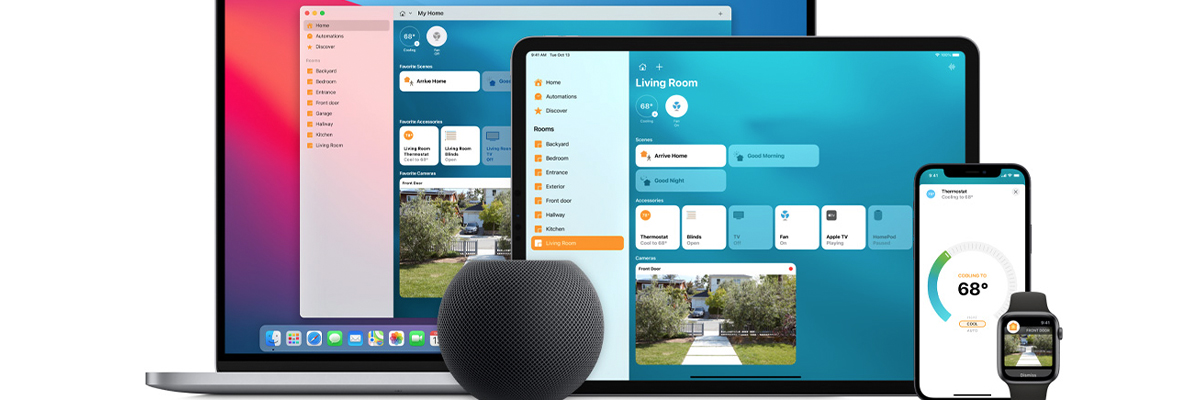
Return navigate_next
Apple HomeKit: Introduction to Apple’s Smart Home System
October 4, 2021 *
In the past, people tended to mix and match tech brands. For instance, few people would have thought twice about purchasing an Apple iPhone and an Amazon Echo. As Popular Science recently pointed out, acquiring devices for a smart home might change buying habits. Consumers will probably demonstrate more brand or operating system loyalty to ensure maximum compatibility.
Today, deciding between such brands as Amazon HomeKit, Google Nest, and Amazon Alexa can represent a commitment. Consumers will favor future devices that work well with what they already have. Take a few minutes to explore Apple’s HomeKit to decide if it will provide the best option to suit current plans and future goals.

How Does Apple HomeKit Work?
According to Tom’s Guide, Apple HomeKit offers one of the most straightforward introductions to smart home technology. For example, iPhone owners could stand at the front door and tell Siri that they’re home. Then, the smart lock will automatically unlock, connected light bulbs will turn on, and the smart thermostat will adjust itself.
HomeKit offers a system for managing and controlling many connected devices. Unfortunately, HomeKit currently lacks many options that Google or Amazon offers, but Apple fans still have plenty of choices. For an introduction to HomeKit, see this updated list of Homekit-compatible accessories on the Apple site.
Compatible devices include switches, TVs, doorbells, thermostats, and much more. For example, while HomeKit can’t draw a bath, it can connect to a Kohler Artifacts kitchen sink faucet. So instead of rummaging around for a measuring cup, users can simply tell the faucet to pour a cup of water. That might seem trite to some, but touchless technology can prove useful to avoid touching the faucet with dirty hands or for people with mobility issues.

The Benefits of Apple HomeKit
Many top manufacturers offer compatible devices for Apple HomeKit. Still, Apple does not yet offer as many options as its competitors. At the same time, a slower introduction of new connected devices may suit the company’s goals. In addition, Apple likes to keep strict control over its platform.
Also, most reviewers consider Apple’s system the easiest one to set up because everything uses the Apple Home App. In particular, people who already use such other Apple products as iPhones and iPads will find using this smart home system intuitive and natural.
Protecting Apple HomeKit Devices
After you invest in connected thermostats, home security systems, TVs, and many other kinds of HomeKit-compatible devices, you’ll need to ensure everything works effortlessly and seamlessly for many years. Upsie provides the best extended warranty protection for many of your smart home devices.
Upsie smart home extended warranties offer premium service at a lower price than most competitors. For example, Upsie’s warranties are often more than 70 percent more affordable than warranties offered by competitors.

In addition, with Upsie, you can expect the following:
- Enjoy protection against mechanical, sound, screen, power, and component favors with an affordable two-year or three-year plan for each device. Upsie even protects select devices against damage from liquids.
- Get the choice of local or ship-in repair services. Upsie covers shipping costs both ways for fast, two-day shipping.
- When repairs don’t make sense on the first claim, Upsie will offer a replacement.
Upsie protects smart home devices with 24-7 claims service and hassle-free repairs. In addition to smart home devices, Upsie also offers warranty insurance plans for smartphones, tablets, and many other electronic devices.
Learn More About Smart Home Devices:
* This article is over 6 months old and may or may not be updated.
